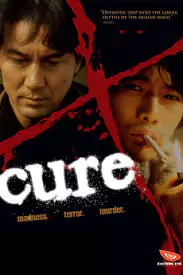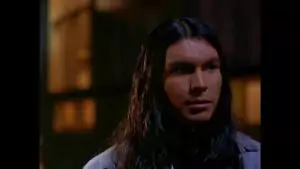 If you watch movies filmed in different parts of the world, you might notice that each region, be it America, Europe, or Asia, puts its own distinct atmosphere in its cinematography. This is not about these movies’ plots or cast, but rather about the manner in which they are made. For example, American movies often have a happy ending; European cinema is contemplative and/or philosophical; Latin American movies major in melodramatic plots. As for Asian movies, they are… strange, to say the least. And probably one of the most convex and representative Asian movies, in these terms, is “Cure,” filmed in 1997 by the Japanese director Kiyoshi Kurosawa.
If you watch movies filmed in different parts of the world, you might notice that each region, be it America, Europe, or Asia, puts its own distinct atmosphere in its cinematography. This is not about these movies’ plots or cast, but rather about the manner in which they are made. For example, American movies often have a happy ending; European cinema is contemplative and/or philosophical; Latin American movies major in melodramatic plots. As for Asian movies, they are… strange, to say the least. And probably one of the most convex and representative Asian movies, in these terms, is “Cure,” filmed in 1997 by the Japanese director Kiyoshi Kurosawa.

✅ AI Essay Writer ✅ AI Detector ✅ Plagchecker ✅ Paraphraser
✅ Summarizer ✅ Citation Generator
“Cure” is a psychological thriller telling a story of a police detective, Takabe, solving mysterious murders: all killers committed crimes without any obvious reasons (one of them even admitted this); all victims, however, despite being murdered by different people, were killed in the same manner—they had a big “X” letter cut on their throats. During the investigation, Takabe and his friend-psychiatrist Sakuma discover there is one man responsible for the murders: Mamiya, a strange young amnesiac, who cannot recall even something that happened minutes ago. A talented hypnotist (or mesmerizer, since the movie appeals to Mesmer a lot), Mamiya makes other people kill each other. But why? The more Takabe tries to find out, the more he seems to be losing his own sanity.
The movie is slow-paced. Although one of the most shocking scenes is demonstrated within the first five minutes, the plot develops unhurriedly. “Cure” has no jumpscare moments, no abrupt scenes when music suddenly shrieks and your heart pounds in your chest heavily; on the contrary, “Cure” is monotonous, almost melancholic; many scenes are accompanied by the sounds of working machinery sounding in the same tonality. This creates a specific atmosphere, suspense, when you wait for something horrible to happen, but there is nothing but silence. Colors and visual techniques contribute to the general atmosphere as well: grayish muted tones, cold grubby interiors, few people. “Cure” is difficult to watch, and this is what makes you believe the film even more: it is brutally honest in its detachment.
The main characters match their surroundings perfectly: Takabe, a stressed detective with a mentally-disabled wife to take care of, and Mamiya, a young man, imperceptibly sinister in his autistic madness. Unlike impetuous and sometimes aggressive Takabe, Mamiya is always detached and apathetic. His manner of conversation, his facial expressions, behavior, alienation—all this conveys a feeling that he hides something deep inside, something that he never asked for, but what defines his actions. In one episode, Mamiya jumps off a roof: an attempt to escape from himself, from a power too big for him. Takabe looks for the reason behind Mamiya’s actions, but the more you watch, the more it seems that Mamiya—just like people he programmed for murder—has no reason to do what he does. Is it free will, dictated by the nature of humankind? Or its absence, which would mean that Mamiya himself was hypnotized by someone else? There is no answer.
(Attention: spoilers ahead)
The ending logically follows the plot, but provokes more questions than answers. Why did Takabe kill Mamiya—because he wanted to rid his society of a monster, or because Mamiya made him do it? Was Mamiya the only one? If no, then who hypnotized the waitress in the final episode? If yes—was it Takabe? Did Takabe solve his inner conflict by killing his wife in the mental asylum? Moreover: how did Mamiya escape when caught for the first time? Was it Takabe who helped him? And who killed Sakuma? These questions arise from the intentional (I believe it was intentional) ambiguity: whatever option you choose, you will find proof in its favor. Whether Takabe acted on free will and honestly pursued Mamiya; whether he was hypnotized and helped Mamiya escape, and then killed his own friend; whether it was him who killed his wife and hypnotized a waitress, or there was someone else able to subdue other people’s minds—you decide. Any decision is true. And this is what makes this movie great for me.
There were many flaws and drawbacks, starting from numerous assumptions being unscientific, and several gaps in logic. But no matter what, “Cure” is a bright example of a truly psychological thriller: dark, mysterious, and atmospheric.
Follow us on Reddit for more insights and updates.




Comments (0)
Welcome to A*Help comments!
We’re all about debate and discussion at A*Help.
We value the diverse opinions of users, so you may find points of view that you don’t agree with. And that’s cool. However, there are certain things we’re not OK with: attempts to manipulate our data in any way, for example, or the posting of discriminative, offensive, hateful, or disparaging material.